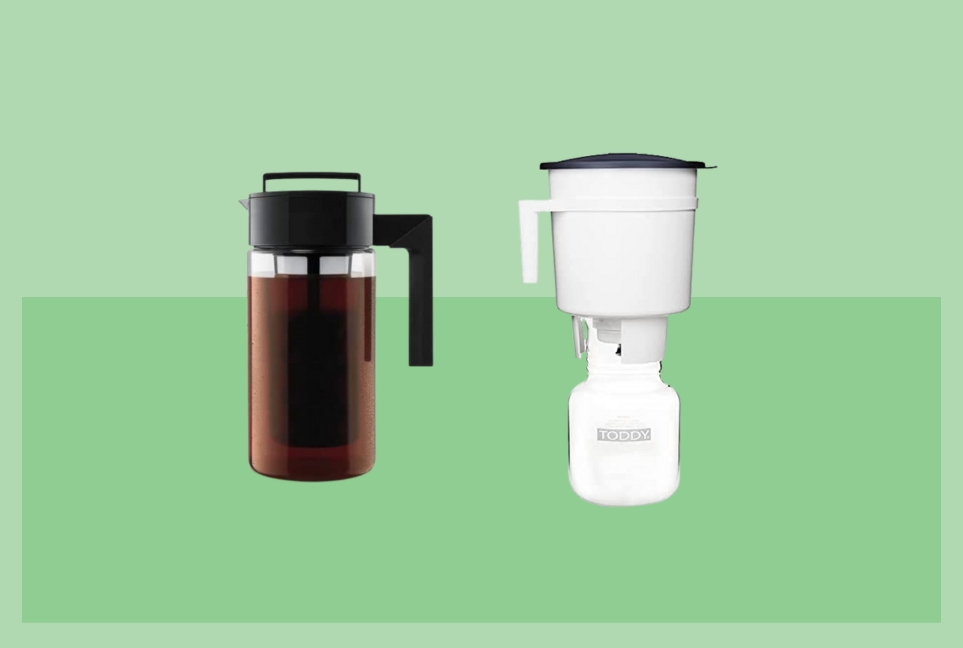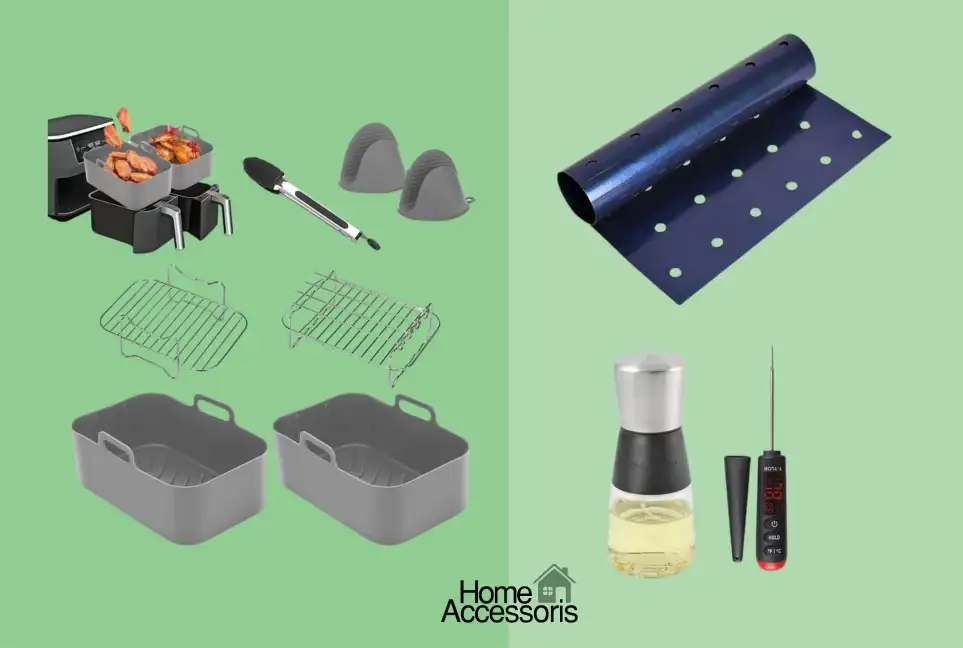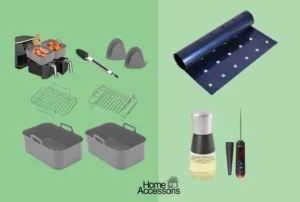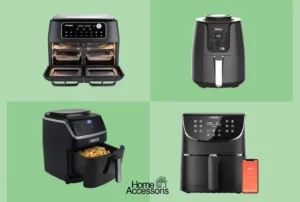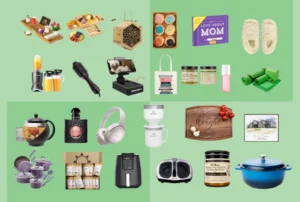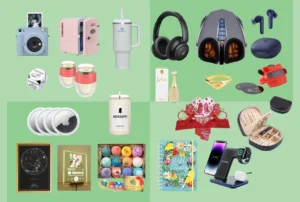You can make iced coffee by brewing hot coffee and pouring it over ice. However, starting with a cold brew will yield smoother, bolder effects. The mild — and straightforward! — The brewing procedure yields a highly flavoured concentrate that may be sipped over ice or blended with hot water for an Americano-style cup. Cold brew steers coarse coffee grounds in cold water for an extended time – often 12 to 24 hours. Coffee makers,Cold Brew Coffee Makers, drip coffee makers, single-serve coffee machines, French press coffee makers, latte machines, cold brew coffee makers, and coffee makers with grinders. It also keeps in the fridge for up to two weeks.
The Home Accessories Institute Kitchen Appliances and Innovation Lab assessed more than a dozen of the market’s most popular options, including electric versions, French press designs, and those with paper filters or wire mesh filters. We brew coarsely ground coffee according to the manufacturer’s specifications, then measure factors like the amount of coffee extracted, similar to how we test coffee-making gadgets like espresso makers. We also do a blind taste test and score the convenience of usage of each model.
The list of cold brew coffee makers hand-picked by our experts is below. You can also learn more about the many varieties of cold brew coffee makers, what to look for while shopping, and how to operate the little gadget at home to make a smooth, creamy cold brew.
1

PROS
- Brews both cold brew and tea
- Can pour directly from the fridge
- Sleek aesthetic
CONS
- Measurement markings offer a good guide but best results include weighing grounds
- Cumbersome to clean
Item Dimensions LxWxH: 8 x 7 x 6.9 Inches.
Item Weight: 5.5 pounds.
Material: Glass, stainless steel.
Capacity: 28 ounces.
This KitchenAid cold brew coffee machine has a sophisticated appearance thanks to its stainless steel and glass construction; it looks fantastic on the counter or in the refrigerator. It is quite user-friendly and intuitive, according to our tests. The user manual provides recipes, step-by-step directions, and graphics for the concentrate. An enormous handle on the top makes it easy to remove, and the reservoir includes a coffee fill guideline, so you don’t have to waste time measuring in another container. A word of caution: our tester discovered that the fill line was not perfectly accurate; the measured grounds sat slightly over the line. This serves as a reminder to use a kitchen scale for accurate measurements because all grinds vary in size.
The steeping results were flavorful and smooth after 12 hours. The concentrate was pleasant over ice and with hot water, and our tester had no issue utilizing the spout—which had a moderate velocity that was easy to control. This pick can also be used to make tea. Ensuring you’ve reached all the nooks and crannies can be challenging, and the item is not dishwasher safe.
2

PROS
- Paper filters offer easy clean-up
- Clear instructions
CONS
- Paper filters cost $1 each on Toddycafe.com
Dimensions: 7.25 x 7.25 x 12.5 inches.
Weight: 2.51 pounds.
Material: Plastic, glass.
Capacity: 33.8 ounces.
Although the top of the Toddy Cold Brew system is heavy and seems to defy gravity, it is still among the greatest cold brew coffee makers available, according to our experts, and it is also one of the best deals.
A deep, rich, and silky-smooth concentrate is produced by following the directions, which received an A+ for being very simple to follow during the whole setup, brewing, and cleaning procedure. The purpose of this selection is to lessen sedimentation: It uses both paper and felt filters. The paper filters, which cost around $1 apiece, simplify cleanup, but the reusable felt filters are more economical and environmentally good.
We also liked how the Toddy produced about four cups of concentrate, easily enough for eight servings, from a brewing mixture of 12 ounces of coffee and about 54 ounces of water.
3

PROS
- Comes in two sizes
- Handle for easy pouring
- Dishwasher safe
CONS
- No measurement markings on the side
Dimensions: 5 x 7.5 x 9.5 inches.
Weight: 9.6 ounces.
Material: Plastic.
Capacity: 33.8 ounces.
The Takeya Deluxe Cold Brew Coffee Maker is reasonably priced without compromising quality. Nearly flawless ratings were given to the pitcher-style cold brew maker in every usage category. Although the handbook is incredibly useful and informative, the gadget is generally simple and intuitive. It’s dishwasher safe and easy to clean all the pieces.
Like a tea infuser, the fine mesh filter ensures the cold brew maker produces a rich, smooth concentrate free of debris. (It also functions as a maker of iced tea.) Our testers generally found the flavour profile satisfactory, especially considering the cost.
The design is also well-considered. Sizes available in 1- or 2-quart capacities. Each is the same size as a regular pitcher with a comparable capacity, so you can pour portions by placing the entire thing in the refrigerator. Please note that the carafe’s side does not feature any dimensions, so if you want exactness, you will need to eyeball it or use a different measuring cup.
4

PROS
- Large "rainmaker" showerhead allows for even dispersal of water
- Parts nest inside each other for storage
CONS
- Does not include lid for brewing reservoir
Dimensions: 9.5 x 9.5 x 14.75 inches.
Weight: 4 pounds.
Material: Plastic, glass.
Capacity: 32 ounces.
OXO’s best-selling model produced outstanding coffee with a smooth, well-balanced, chocolatey flavour. Our testers praised how user-friendly it was: All you need to do is add some coarsely ground coffee and fill it with water using the perforated “rainmaker” top, which will help to distribute the water throughout the grounds evenly. The 32-ounce carafe will hold enough coffee concentrate for around 14 cups once your grounds are strained after letting them sit for 12 to 24 hours. We liked that the appliance includes a built-in mechanism that stops the drip if the carafe moves, which helps to avoid messy situations.
This specific model creates a coffee concentrate that may be enjoyed for up to two weeks, despite the advice of many experts that cold brew is best consumed within a week of brewing. This is because the lid has a silicone barrier that helps keep the beverage fresher for longer.
Even though this choice is mostly made of plastic, our testers gave the cleaning procedure a near-perfect 4 out of 5 because of the dishwasher-safe glass carafe and the easy-to-clean reusable stainless steel filter. Our experts discovered that making room in the refrigerator was simple and appreciated the measurement indications on the carafe, which are useful for dosing your water before brewing and your coffee after.
Our testers praised this high-capacity model for its convenience; even for two people, you’ll only need to brew it once a week. It’s important to remember that OXO also makes a tiny cold brew model that is just as efficient and simple to clean as its larger sibling, in case you prefer to create a smaller quantity or have less room.
How we test cold brew coffee makers
In the Lab, we tested thirteen of the most well-liked models of cold brew coffee makers, examining models with paper filters, wire filters, French press designs, and electric models, among other variations.
We brewed the same kind of coffee in each cold brew coffee maker according to the manufacturer’s instructions to evaluate the overall performance of each machine. We measured and noted the coffee’s temperature and the amount of coffee extracted once the brewing procedure was finished. Then, our test kitchen experts ran a blind-tasting test to determine which ones made the richest, smoothest cold brew.
We also kept track of usability throughout the process, noting how informative the handbook is, how easy or difficult the setup procedure is, and how much cleanup is involved. We also saw additional features like storage lids and tea brewing capabilities.
What to consider when shopping for cold brew coffee makers
✔️ Style: Electric and non-electric cold brew coffee makers are the primary varieties.
The most popular and conventional type is non-electric, and it includes two basic brewing methods: immersion and slow drip. The Takeya and Kitchenaid cold brew coffee machines and other models that use an immersion method place their coffee grinds inside a filter immersed in cold water for a minimum of 12 to 24 hours. The cold water and coffee grounds are initially allowed to soak together in slow-drip coffee machines like Oxo and Toddy. After that, the infused water—also known as cold brew coffee—drains into a different container, frequently with the help of a stopper that the user releases.
By steeping the coffee grounds and stirring them to extract flavour more quickly—in as little as five to forty-five minutes—electric cold brew coffee makers seek to accelerate the slow brewing process. (They usually don’t do this with heat.) Even though they saved time, our testers discovered that electric cold brew makers could not produce the intensely flavorful drinks that the non-electric techniques could.
✔️ Filter type: While some cold brew coffee makers employ mesh stainless steel filters, others require paper filters. Both can produce a great cold brew, but paper is simpler to clean after using; throw it away. Nevertheless, replacements are more expensive regularly and have a lower environmental impact than metal ones. Be advised that although stainless steel mesh has a long lifespan, cleaning it can be more difficult.
✔️Material: Glass, plastic, or a mix are typically used for cold brew coffee makers. Although overall construction doesn’t always affect the quality of coffee made, it could be something to consider when purchasing. Glass might be thinner and more brittle than plastic. Still, it is heavier and more stable overall. Plastic is quite strong, but it absorbs odours more easily and stains more easily. Additionally, glass cold brew brewers are usually safer to clean in the dishwasher, which is a wonderful convenience.
✔️ Dimensions: Since cold brew coffee makers are meant to fit inside refrigerators, they come in various sizes, albeit the majority are small. Look for ones resembling a Mason jar or a water pitcher if size concerns you. Larger cold brew makers can produce more than a few cups of coffee at a time but be prepared to give up space for these bulkier choices if you would rather make a larger batch of coffee that will last you a week or more.
How to make cold brew coffee
Making cold brew coffee at home is simple affordable, and gives you the freedom to customize the method to your tastes. Fortunately, cold-brew coffee makers simplify the procedure. Here’s how to proceed:
Select your area. Whatever roast you choose is OK, but remember that single-origin beans work well for cold brew because it’s a gentle process. You can purchase coarsely ground beans, buy whole beans, and grind them yourself on the coarse setting. Smaller grind sizes are not the best because they accelerate flavour extraction, resulting in a stronger-tasting coffee. Furthermore, the grinds will clump and may form silt if you grind them too finely. Although it might seem like you’re consuming a lot of coffee, keep in mind that you’re creating a concentrate that should be greatly diluted with water, ice, and milk.
Make use of the proper water ratio. You’ll need less water to make coffee because you’re making a concentrate rather than boiling coffee. Use 1 cup (about 16 tablespoons) of water for every 1/4 cup (4 tablespoons) of coffee, for a ratio of 1:4. (Pro tip: For the finest flavour, use fresh, cold water for brewing, or fresh, cold water warmed to room temperature.)
Sharp. Generally, you should allow anywhere from 12 to 24 hours for non-electric cold brew coffee makers and 5 to 45 minutes for electric models. However, you should always follow the manufacturer’s instructions for your particular type.
Assist. Concentrate in the refrigerator after your cold brew has finished steeping to preserve freshness. For the best flavour, consume it within a few days or up to two weeks. A 1:1 coffee-to-milk or hot water ratio is perfect for serving.
What is the difference between cold brew and iced coffee?
Although you can order a cold brew and iced coffee interchangeably, they are two distinct natural drinks. In cold brewing, coarsely ground coffee is steeped in cool or room-temperature water for 12 to 24 hours. This is a gradual, no-heat method. Compared to coffee brewed with hot water, the resulting concentrate has a smoother flavour and less acidity. Conversely, iced coffee is usually made in the same manner as hot coffee but with twice the concentration to ensure it doesn’t dilute too much when chilled over ice. Even so, it usually has a milder flavour than cold brew.
Why trust Home Accessoris?
Nicole Papantoniou is the Director of the Home Appliances Institute Kitchen Appliances and Innovation Lab. She has evaluated dozens of coffee makers, such as French presses, espresso machines, single-serve coffee makers, and over a dozen cold brew coffee makers.
Contributor Brigitt Earle has years of expertise reviewing and testing consumer goods, such as iced tea makers, cold brew coffee makers, and other kitchen appliances. She graduated from the French Culinary Institute (formerly the Institute of Culinary Education) with a degree in Professional Culinary Arts.

